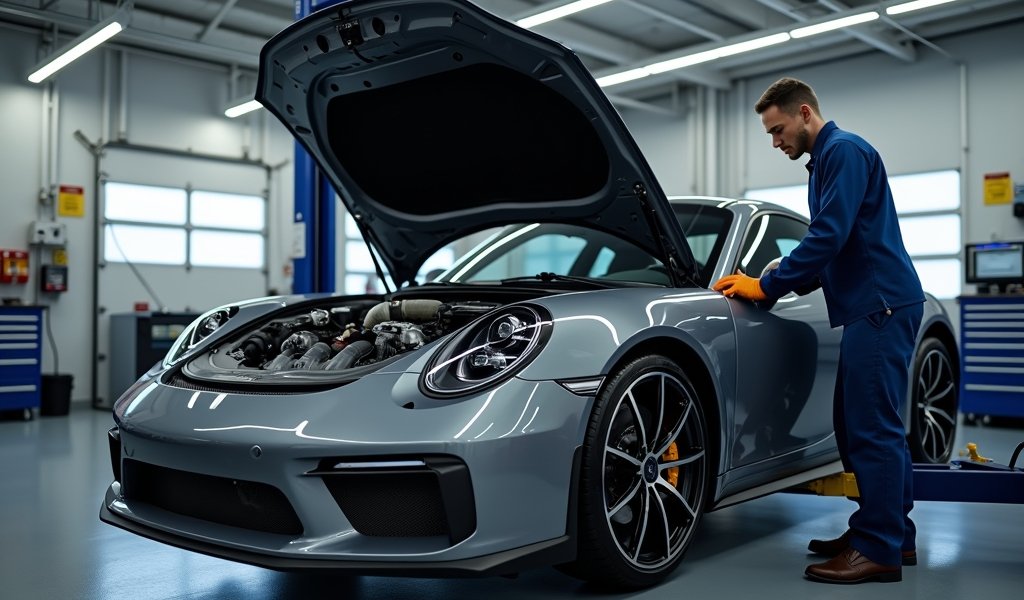Overview
This article provides five expert tips for maintaining vehicle crankcase ventilation systems, including regular inspection, proper cleaning techniques, using quality replacement parts, monitoring oil condition, and considering upgrades for high-performance engines. Proper PCV system maintenance prevents expensive engine damage while improving performance and longevity, with specific maintenance intervals recommended at 15,000-20,000 miles for valve replacement and 30,000 miles for complete system cleaning.
Table of Contents
- Understanding Crankcase Ventilation: Why It Matters
- Common Problems with Crankcase Ventilation Systems
- Pro Tip #1: Regular Inspection Is Your Best Friend
- Pro Tip #2: Proper Cleaning Techniques
- Pro Tip #3: Don’t Skimp on Replacement Parts
- Pro Tip #4: Monitor Your Oil Condition
- Pro Tip #5: Consider Upgrades for High-Performance Engines
- Recommended Maintenance Schedule
- Conclusion: Breathing Easy with Proper PCV Maintenance
- Frequently Asked Questions
Understanding Crankcase Ventilation: Why It Matters
The crankcase ventilation system might not be the most glamorous part of your vehicle, but it’s absolutely crucial for your engine’s health and longevity. As someone who’s spent decades under the hood, I can tell you that this humble system prevents a multitude of expensive problems when properly maintained.
In essence, the positive crankcase ventilation system (PCV system) manages the gases and pressure that build up in your engine’s crankcase during operation. These gases – a mixture of unburned fuel, water vapor, and combustion byproducts – need somewhere to go. Without proper ventilation, they’d create excessive pressure and wreak havoc on your engine seals and gaskets.
Think of it as your engine’s breathing system. Just like how you need to exhale after inhaling, your engine needs to expel these gases after combustion. The PCV system recirculates these gases back into the intake manifold, where they’re burned off in the combustion chamber. This process not only protects your engine but also reduces emissions, making it environmentally friendly.
Common Problems with Crankcase Ventilation Systems
Before jumping into maintenance tips, it’s important to recognize signs of trouble. A failing crankcase ventilation system often reveals itself through several telltale symptoms:
- Increased oil consumption and leaks
- Oil in the air intake system
- Rough idle or stalling
- Check engine light activation
- Whistling noise from the engine (especially at idle)
- Visible oil leakage around valve cover gaskets
Most problems stem from clogged PCV valves, blocked hoses, or deteriorated seals. Over time, oil sludge and carbon deposits build up, restricting the flow of gases and causing the system to malfunction. This isn’t just an annoyance – it can lead to significant engine damage if left unchecked.

Pro Tip #1: Regular Inspection Is Your Best Friend
I’ve seen too many engines damaged by neglected PCV systems. The good news? A simple visual inspection can prevent most issues. Make it a habit to check your crankcase ventilation components every time you change your oil.
Start with the PCV valve – a small component that controls the flow of gases. It should move freely when you shake it (you’ll hear a rattle). If it doesn’t rattle or seems stuck, it’s time for a replacement. Next, inspect all hoses and tubes connected to the system. Look for cracks, hardening, or oil saturation that might indicate leaks or blockages.
Don’t forget to check any breather elements or filters in the system. These can become clogged with oil and debris, reducing efficiency. According to Motor Trend’s technical analysis, a properly functioning PCV system can extend engine life by up to 30% – making regular inspection well worth your time.
Pro Tip #2: Proper Cleaning Techniques
When it comes to cleaning your crankcase ventilation system, a gentle touch and the right approach make all the difference. I’ve developed a methodical cleaning routine over years of working with engines of all types.
For the PCV valve, carefully remove it according to your vehicle’s service manual (location varies by make and model). Once removed, spray it with carburetor cleaner and use compressed air to blow through it in the direction opposite to normal flow. This helps dislodge carbon deposits without damaging the valve mechanism.
For hoses and tubes, disconnect them (take photos first if you’re not confident about reassembly) and soak them in a solution of warm water and degreaser. A soft pipe cleaner can help remove stubborn deposits inside the tubes. Never use wire brushes or sharp objects that could damage the components.
The intake manifold connection points often accumulate significant buildup. Clean these carefully with a shop rag and appropriate solvent. Remember to let all components dry completely before reinstallation.
Pro Tip #3: Don’t Skimp on Replacement Parts
I’ve seen it countless times in my shop – a customer trying to save a few dollars with a bargain-bin PCV valve, only to return months later with more serious issues. When it comes to your crankcase ventilation system, quality parts are non-negotiable.
The PCV valve itself is relatively inexpensive (typically $5-$20), but its quality can vary dramatically. Always opt for OEM (Original Equipment Manufacturer) parts or trusted aftermarket brands with solid reputations. The research from Society of Automotive Engineers shows that inferior valves can fail to regulate pressure properly, leading to oil consumption and potential engine damage.
The same goes for hoses and connections. Silicone hoses generally outperform rubber ones in durability and heat resistance, making them worth the extra investment for long-term reliability. Remember that your entire system is only as strong as its weakest component – so aim for consistency in quality across all parts.
Pro Tip #4: Monitor Your Oil Condition
Your oil can tell you a lot about your crankcase ventilation system’s health. In my years at the shop, I’ve diagnosed countless PCV issues just by taking a close look at a customer’s dipstick.
Keep an eye out for these oil-related warning signs:
- Milky, foamy oil (indicates excessive moisture that isn’t being properly vented)
- Rapidly darkening oil between changes
- Oil level rising (can indicate fuel dilution due to PCV issues)
- Excessive sludge formation
Regular oil analysis can provide even more insights. For about $25-30, you can send a sample to a lab that will identify contaminants that might point to ventilation problems. This proactive approach has saved many of my customers from major repairs down the road.

Pro Tip #5: Consider Upgrades for High-Performance Engines
If you’ve modified your engine for higher performance or frequently drive under demanding conditions, the factory crankcase ventilation system might not be adequate. This is where strategic upgrades can make a significant difference.
One popular upgrade is installing an oil catch can, which acts as an intermediary between the crankcase and intake manifold. It traps oil particles and contaminants before they can enter the intake system, keeping your engine cleaner and potentially improving performance. I’ve installed countless catch cans over the years, and the difference in intake cleanliness is remarkable.
For turbocharged engines, consider a more robust breather system that can handle the increased pressure. Some aftermarket systems offer additional filtration or larger diameter hoses to improve flow. Just ensure any modification complies with local emissions regulations – not all upgrades are street-legal in every jurisdiction.
Recommended Maintenance Schedule
Based on my experience with thousands of engines, here’s a practical maintenance schedule to keep your crankcase ventilation system in top condition:
- Every oil change (3,000-5,000 miles): Visual inspection of all PCV components
- Every 15,000-20,000 miles: PCV valve cleaning or replacement
- Every 30,000 miles: Complete system cleaning, including all hoses and connections
- Every 60,000 miles: Comprehensive replacement of all rubber components (hoses, grommets, etc.)
These intervals are general guidelines – vehicles operated in dusty environments or extreme conditions may require more frequent attention. Your vehicle’s service manual may also specify different intervals based on the manufacturer’s recommendations.
Conclusion: Breathing Easy with Proper PCV Maintenance
Your crankcase ventilation system is truly the unsung hero of engine longevity. By following these five pro tips – regular inspection, proper cleaning, quality replacement parts, oil monitoring, and strategic upgrades – you’ll ensure this critical system keeps functioning as designed.
Remember that proactive maintenance is always less expensive than reactive repairs. A few minutes checking your PCV system during routine maintenance can save you hours of headaches and hundreds or even thousands in repair costs down the road.
Your engine literally needs to breathe, and a well-maintained crankcase ventilation system ensures it does so efficiently. Give it the attention it deserves, and it will reward you with smoother operation, better fuel economy, and a longer engine life. After all, isn’t that what every car owner wants?
Frequently Asked Questions
What exactly does the crankcase ventilation system do?
The crankcase ventilation system removes harmful gases from your engine’s crankcase and recirculates them through the intake system. It prevents pressure buildup that could damage seals and gaskets while reducing harmful emissions.
How often should I replace my PCV valve?
Most manufacturers recommend replacing the PCV valve every 20,000 to 50,000 miles. However, vehicles driven in severe conditions may require more frequent replacement.
What happens if my crankcase ventilation system fails?
A failed system can cause oil leaks, increased oil consumption, rough idle, reduced performance, and potential internal engine damage. You may also experience check engine lights and increased emissions.
Can I drive with a bad PCV valve?
While your car will still run with a bad PCV valve, it’s not recommended for extended periods. Continued driving can lead to sludge buildup, oil contamination, and eventual engine damage.
Is crankcase ventilation system repair expensive?
Basic PCV system maintenance is relatively inexpensive, with valves costing $5-$20 and simple hoses under $30. Catching problems early prevents the much higher costs associated with engine damage from neglect.

